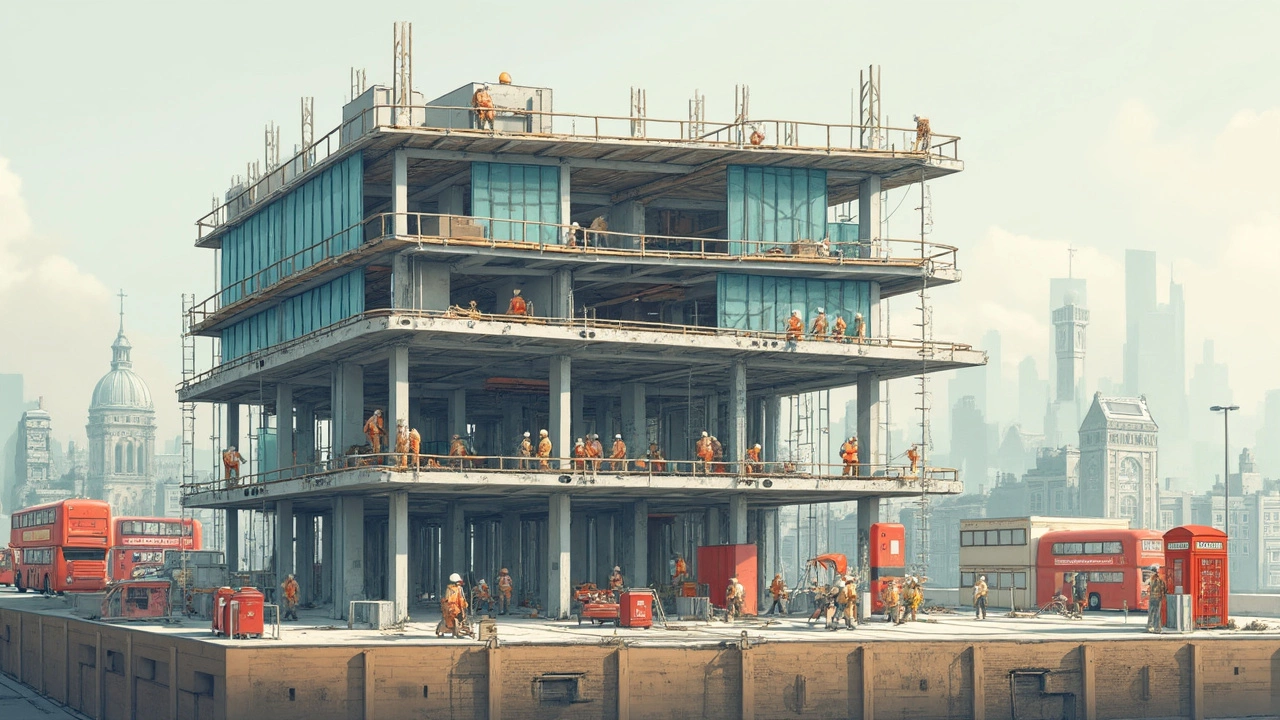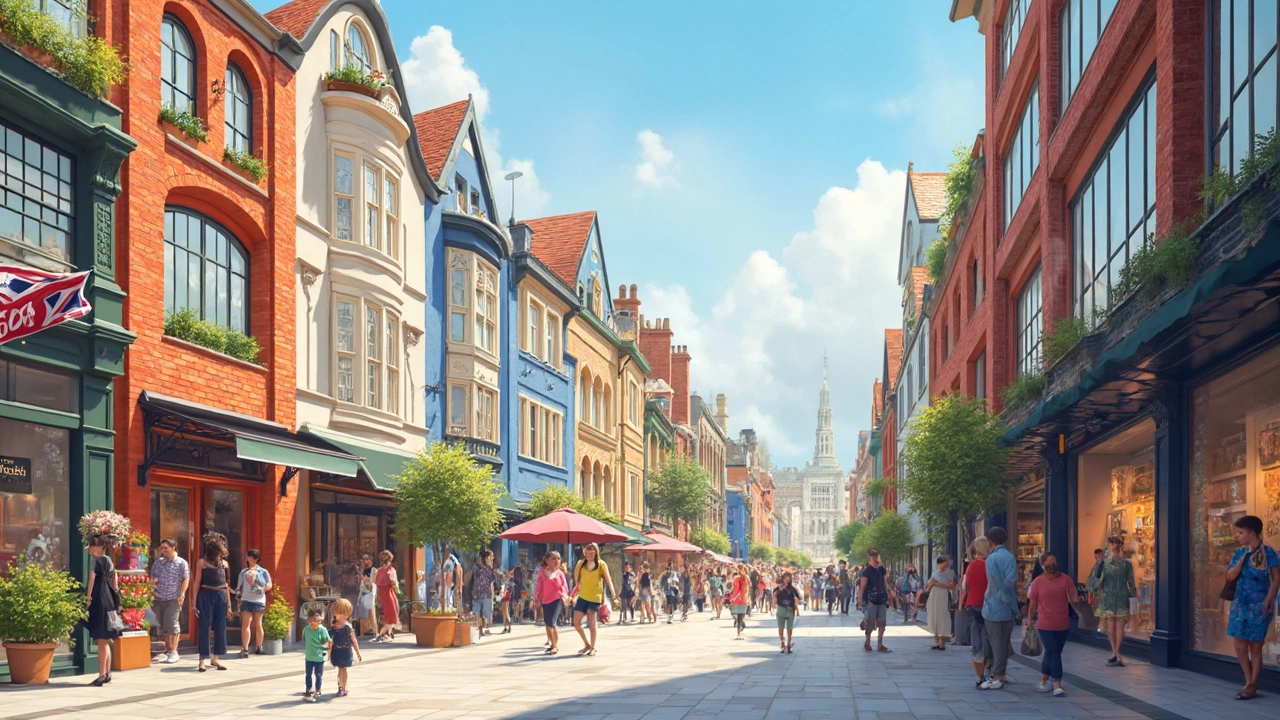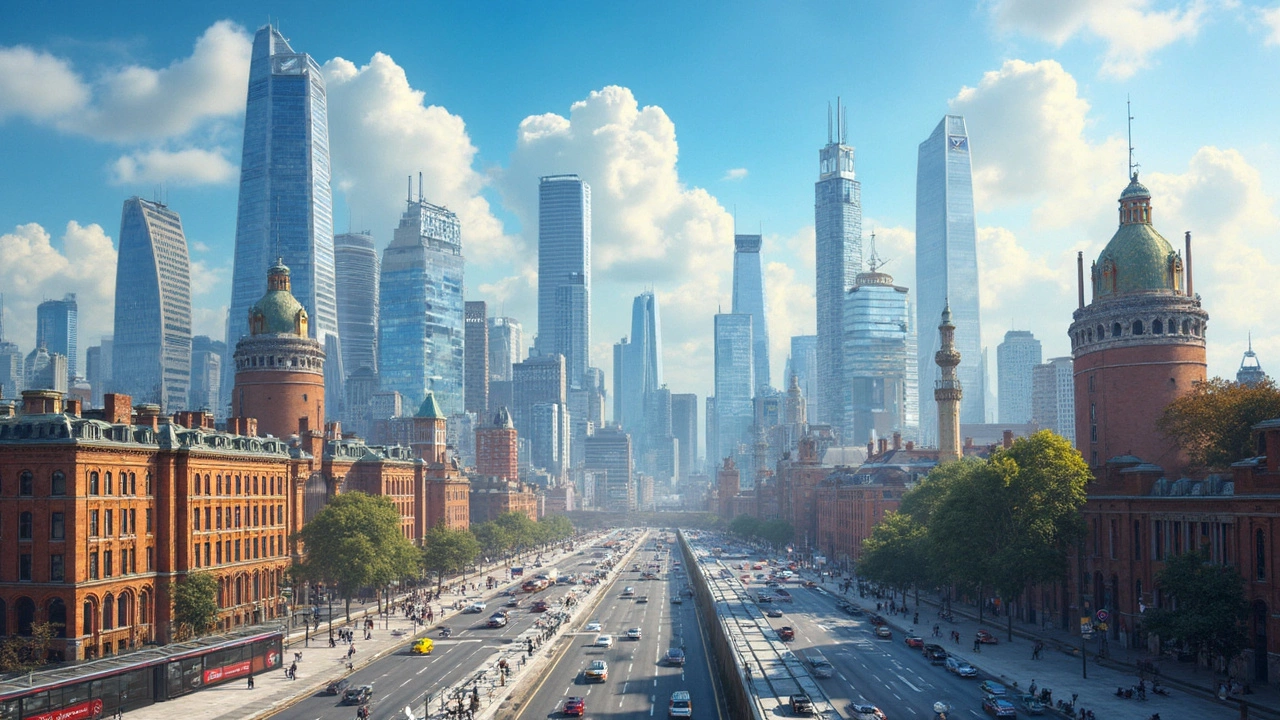Alright, so you’ve probably walked past a skyscraper or two and maybe wondered, 'What goes into making one of those?' Whether it's your local supermarket or a towering office block in the city, the kind of construction used definitely plays a part in its design and functionality. Commercial buildings are a special breed, and they need to be built with both strength and efficiency in mind.
First things first, let’s talk about commercial construction itself. It’s the kind of construction focused on businesses rather than homes. Think corporate offices, malls, hotels, or that shiny new hospital down the street. Every one of these structures needs to support a whole lot of activity, from bustling crowds to daunting equipment loads.
- What is Commercial Construction?
- Common Building Materials
- Popular Construction Types
- Trends in Commercial Architecture
- Environmental Considerations
What is Commercial Construction?
Commercial construction is, at its core, all about creating spaces where businesses can thrive. Whether it’s an office building or a shopping mall, we're talking about buildings designed for commercial use. These aren't your run-of-the-mill homes; they are meant to accommodate businesses, employees, and customers. The goal here is function married with form because these buildings need to handle a lot of daily stress.
This type of construction involves a variety of steps, all tailored to meet specific electrical, plumbing, and design needs. Picture the high-rise offices dominating city skylines or the neighborhood grocery store anchoring a residential block. Such projects demand a symphony of architects, engineers, and contractors working together, not to mention the need for regulatory approvals and safety standards.
Digging a bit deeper, we see a variety of subtypes within commercial construction. For instance, a project might include retail spaces like malls and boutiques, hospitality buildings including hotels and restaurants, or industrial facilities like warehouses and manufacturing plants.
To give you a sense of scale, check out this quick snapshot of commercial building types:
| Type | Examples |
|---|---|
| Office Buildings | Skyscrapers, business parks |
| Retail Buildings | Malls, shopping centers |
| Industrial Buildings | Warehouses, factories |
| Institutional Buildings | Schools, hospitals |
These categories reflect the breadth of commercial construction and highlight the diversity of projects that contractors can take on. It's truly a field that shapes how our communities look and function.
Common Building Materials
When it comes to constructing commercial buildings, choosing the right materials is like picking the right players for a winning team. Each one has its own role, adding something unique to the building's structure and appearance. So, what are these key players in the world of construction materials?
First up, we've got concrete. This is like the bread and butter of the commercial construction world. It's strong, versatile, and can be easily molded into a variety of shapes, making it essential for things like floors and walls. Plus, with advances in technology, we now have reinforced concrete that can handle the big stress loads that come with massive commercial buildings.
Next is steel. Imagine needing a superhero in your construction toolkit—steel is the one you call on. It's used extensively for the framework of skyscrapers and bridges because of its strength-to-weight ratio. Steel frames not only ensure that buildings are sturdy but can also save time and money during construction.
Don’t forget about glass. In modern architecture, glass isn't just a pretty face. Sure, it gives that sleek, modern look with those jaw-dropping floor-to-ceiling windows, but it also provides natural light, which can drastically cut down on energy costs. Double or triple-glazed glass is something to watch out for since it offers great insulation.
More recently, sustainable materials like cross-laminated timber (CLT) are growing in popularity. Known for being eco-friendly, CLT offers good insulation and can be used for walls, floors, and roofs. It's a favorite among those who want to lower the carbon footprint of their buildings.
Here's a handy table to give you a quick snapshot of the materials:
| Material | Key Use | Benefits |
|---|---|---|
| Concrete | Floors, walls | Strong, versatile |
| Steel | Framework | Durable, cost-effective over time |
| Glass | Windows, facades | Modern look, energy efficient |
| Cross-Laminated Timber (CLT) | Walls, floors, roofs | Eco-friendly, good insulation |
So next time you're looking at a commercial building, you'll know a bit more about the behind-the-scenes heroes that keep it standing tall. Maybe one day you'll even spot some CLT among the glass and steel!

Popular Construction Types
When it comes to commercial construction, there are a few tried and true methods that you’ll see over and over. These construction types have stood the test of time due to their functionality, durability, and sometimes, speed of completion.
One of the most recognized methods is steel frame construction. This involves using a skeleton frame of steel beams to support the building. It’s a favorite for skyscrapers because steel is both strong and flexible, allowing these giants to sway a bit with the wind without snapping. It's kind of like how a solid tree bends but doesn't break during a storm.
Next up is reinforced concrete construction. This method combines concrete with steel reinforcement bars, or rebar, making it super robust. It’s ideal for many commercial buildings because it can handle heavy loads and withstand both natural and manmade pressures. Plus, it offers more resistance to heat, which is a huge bonus for safety.
For more sprawling structures like malls or warehouses, you might encounter pre-engineered building (PEB) systems. These involve fabricating most components offsite, which can speed up the construction process significantly. The pieces are then transported and assembled on-site, kind of like a giant LEGO set for adults!
Finally, there's the popular timber construction for those looking to go green. With the rise of sustainable architecture, timber, especially engineered woods like cross-laminated timber (CLT), are becoming all the rage. They’re not just eco-friendly but also provide a unique aesthetic quality that's hard to beat.
- Steel Frame Construction: Best for high-rises and skyscrapers.
- Reinforced Concrete Construction: Great for durability and heavy load-bearing buildings.
- Pre-engineered Building Systems: Ideal for quick assembly and large, open spaces.
- Timber Construction: Eco-friendly choice, gaining popularity in sustainable projects.
Trends in Commercial Architecture
Alright, let’s dig into what's shaking up the world of commercial construction these days. If you’ve noticed, our cities are getting pretty stylish, and there's a lot going on behind the scenes.
The big trend right now? Sustainability. Everyone's all about going green, which isn’t just about the environment (though that's a massive part) but also about cutting costs in the long run. Buildings with solar panels or green roofs are popping up all over. These features don’t just look cool; they help save on energy bills and even extend the building's lifespan.
Another trend is mixed-use spaces. Gone are the days when a building was just for offices. These multipurpose designs combine workspaces, shops, and living quarters all under one roof. This kind of setup means you might live in a place where the gym is just an elevator ride away, and that's super appealing, especially in dense urban areas.
Then there's smart technology. Buildings are getting brains, with integrated systems that control lighting, heating, security, and more. Imagine walking into your office and having the lights and air conditioning adjust automatically to create the perfect environment. It’s all about convenience and efficiency.
Architecturally, there’s a shift towards more open spaces and natural light. Glass facades and open floor plans are everywhere, creating environments that feel spacious and welcoming. And beyond just looks, it’s about boosting productivity and mood for folks working or shopping there.
Here's a quick look at some stats to chew on:
| Trend | Percentage of Adoption |
|---|---|
| Sustainability/Green Building | 80% |
| Mixed-Use Development | 60% |
| Smart Technology Integration | 75% |
These evolving trends in commercial construction are shaping the future of our urban landscapes, making buildings more adaptive to our lifestyles and the planet's needs.

Environmental Considerations
These days, going green is more than just a trend, it's a necessity. Commercial buildings are stepping up their game to be more environmentally friendly, and it's fascinating to see the innovative approaches being used. From cutting down on energy consumption to using sustainable materials, the construction world is really embracing change.
One popular approach in commercial construction is using energy-efficient technologies. You know those automatic lights that seem to always know when you leave a room? They're there to save energy. Smart HVAC systems are another cool example, adjusting temperatures based on the number of people in the building or the time of day. These systems help cut down on energy use and make the building more comfortable at the same time.
- Sustainable Materials: Using recycled steel, reclaimed wood, and eco-friendly concrete is becoming the norm. These materials not only reduce the environmental footprint but also often end up being cost-effective in the long run.
- Water Conservation: Water-efficient fixtures and rainwater harvesting systems are gaining traction. Buildings can significantly reduce water waste this way.
- Green Roofs and Solar Panels: Ever noticed patches of green on rooftops? Those green roofs help with insulation and cooling. Plus, solar panels up there are soaking in those rays to generate renewable energy.
Environmental certifications like LEED (Leadership in Energy and Environmental Design) are also driving developers to rethink their strategies. A LEED certification not only means the building is more sustainable, but it also makes it more attractive to potential tenants and buyers. As cities push for lower carbon footprints, commercial construction is at the forefront, adapting with innovative solutions and becoming greener every day.
